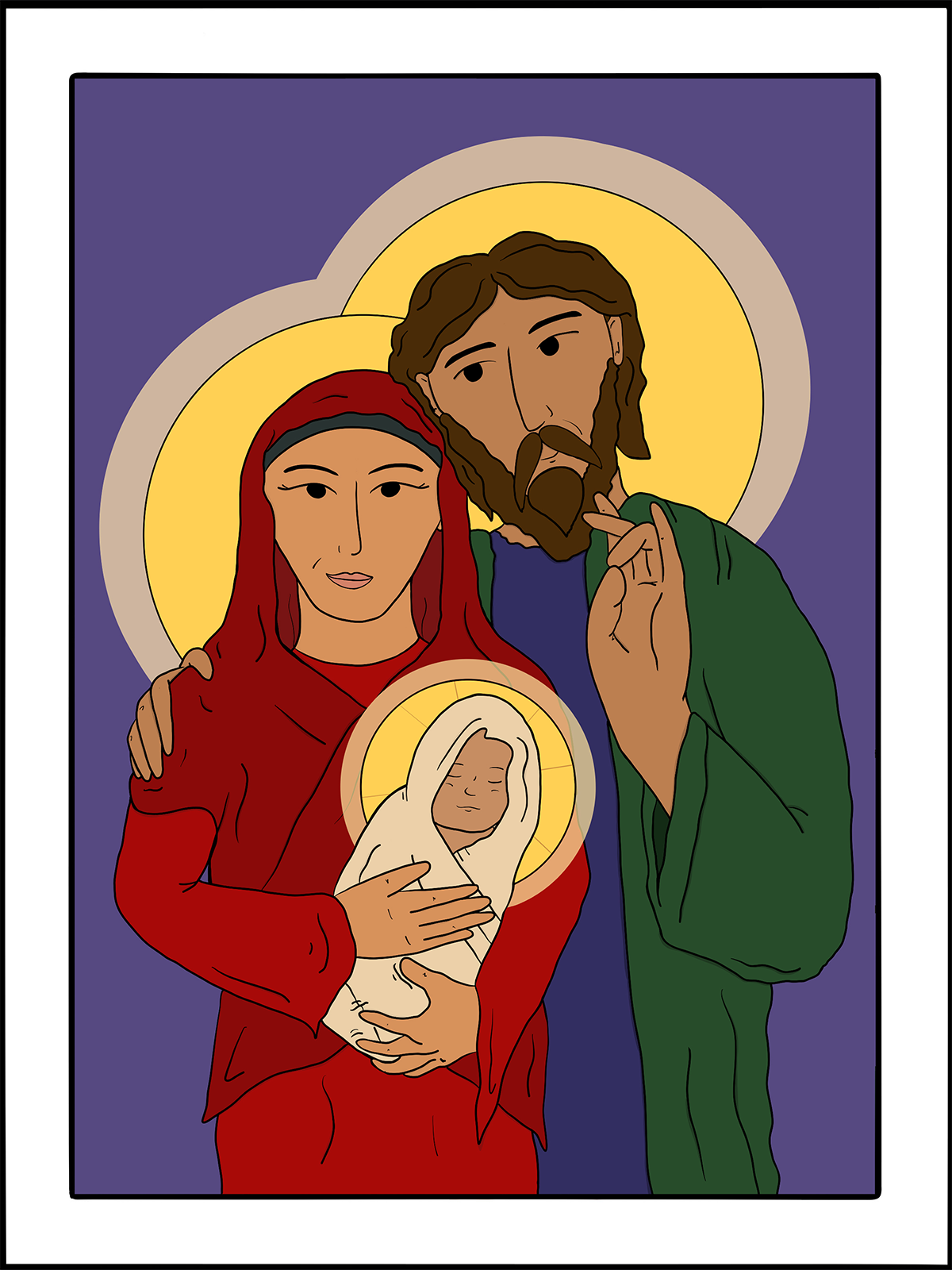
DECember 25
The Nativity of our Lord Jesus Christ
art by Rev. Kirsten Kohr of Geneva, OhioO God, you make us glad by the yearly festival of the birth of your only Son Jesus Christ: Grant that we, who joyfully receive him as our Redeemer, may with sure confidence behold him when he comes to be our Judge; who lives and reigns with you and the Holy Spirit, one God, now and for ever. Amen.
That Jesus was born is a fact both of history and revelation. The precise date of his birth, however, is not recorded in the Gospels, which are, after all, not biographies, and show little concern for those biographical details in which more modern Christians are interested. Such interest began to become prominent in the fourth century, together with the development of liturgical observances concerning the events of biblical history.
Scholars have offered various theories about how December 25 came to be selected as the date for the liturgical commemoration of the Nativity in the Western Church. An older scholarly view suggests that the date, coming as it does at the winter solstice, was already a sacred one, being observed by Roman pagans as the festival of the birth of the Unconquerable Sun (dies natalis Solis Invicti). This correspondence is noted by some early Christian writers themselves, who see it as a fitting parallel, but the pagan celebration was only established in the late third century, and the Christian observance of December 25 seems to have even earlier antecedents.
An alternative explanation calculates the date of Christmas based on the date of Passover and Easter. Many early Christian theologians, particularly in North Africa, calculated that the Crucifixion had taken place on the 14 of Nisan, which worked out to be March 25 on the Roman calendar. This date also became celebrated as the Feast of the Annunciation because of a widespread pious belief that Jesus died on the same date that he was conceived, showing how deeply interconnected all of the events of salvation history were. December 25, then, becomes the date of Christ’s birth, because it is exactly nine months after the date of his conception. This method of calculating also explains the traditional dating in the Eastern church, which historically fixed the Nativity on January 6 rather than December 25. The Eastern church calculated the date of both Annunciation and Crucifixion using not the 14 of Nisan, but rather the 14 of Artemisios, the first spring month on the Greek calendar. This translates to April 6 on the Roman calendar, which is nine months before January 6.
The full title of the feast dates from the 1662 edition of the Book of Common Prayer. Prior to that revision, the day was known only as “Christmas Day.” The word “Christmas,” which can be traced to the twelfth century, is a contraction of “Christ’s Mass.”
Excerpted directly from “Lesser Feasts and Fasts 2022,” p. 570-571.

